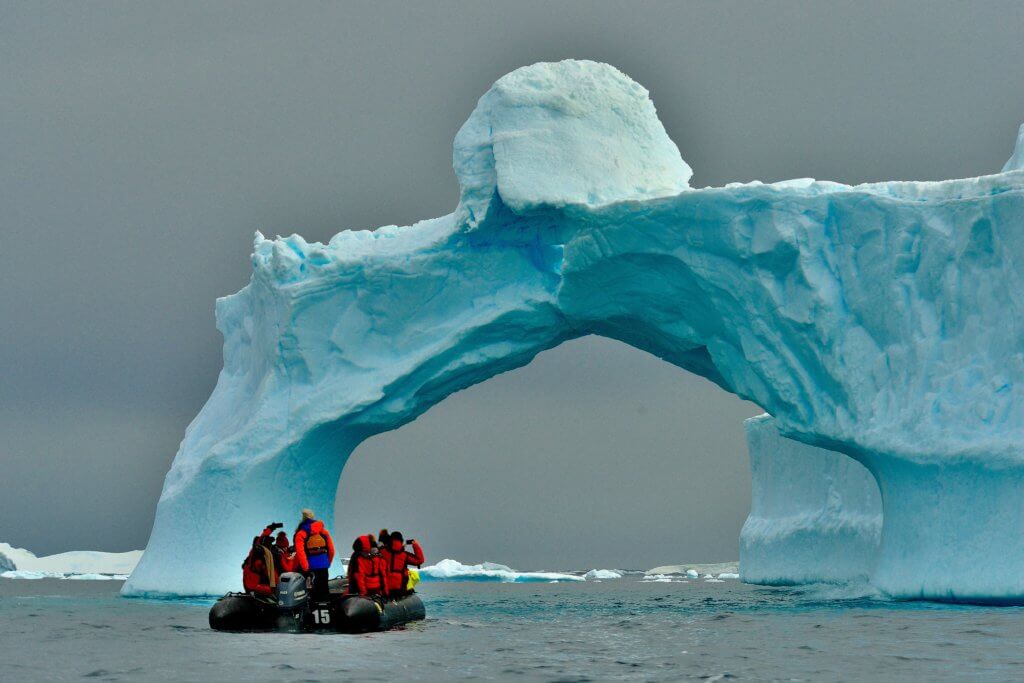
Dr Hanne Nielsen
Questions answered by this expert
Antarctica is a continent of rock that is covered by ice and surrounded by the Southern Ocean – this sets it apart from the Arctic, which is all sea ice and no land. Human activities elsewhere are impacting upon Antarctica and in particular the Antarctic ice – for instance, traces of the industrial revolution can be found within ice cores from the Antarctic, dating to before humans had set foot on the continent. That means we were influencing the place before we even knew that it existed. Now Antarctica is one of the most surveyed places on earth, thanks to mapping, monitoring, and satellite technology. If there was no Antarctica at all, the world’s ocean currents would behave differently. There would be no circumpolar current, and no cold bottom water to drive the circulation of the currents from the south. The animals that live in Antarctica would not have a habitat, so we would have less biodiversity on earth.
It is important to take care of Antarctica because it is a home for many species of animals, such as penguins and seals, and the surrounding oceans are home to whales and krill. Antarctica plays a key role not only for the creatures that call Antarctica and the Southern Ocean home, but also for people who live in far-away places. For instance, melting ice sheets in Antarctica can contribute to sea level rise on distant tropical islands. That means it’s not only scientists who have a role to play in speaking up for and protecting Antarctica – we all have some responsibility. There are many ways to connect with Antarctica from back home – these include participating in citizen science projects (such as counting penguins on Penguin Watch), learning about the similarities between Australia and Antarctica (such as how to identify the trees that have been found in fossils in Antarctica), or enjoying books and films about the continent. The Antarctica that lives in the public imagination is shaped by these sorts of inputs and is super important because most people never visit the continent.

That’s a great question! The majority of people who visit Antarctica do so by ship, so vessels play an important role in allowing humans access to the area. While the reduction in Arctic ice has led to the development of new shipping routes in the north, the Arctic is closer to where people live and such routes are therefore useful for trade purposes. Antarctica is far away from where most people live, so the vessels that head south have specific reasons for doing so. They might be undertaking a scientific expedition, taking tourists to experience Antarctica, undertaking permitted fishing in the Southern Ocean, or patrolling to detect illegal fishing. It can be dangerous to sail into the Southern Ocean because of the large waves that form, the notoriously strong winds (such as the furious fifties and screaming sixties), hazards such as icebergs, and the remoteness of the region.
Every year Antarctica doubles in area over the winter, as the sea ice forms on top of the ocean around the continent’s margins. Sea ice is different to icebergs. Icebergs are formed when ice sheets flow down to sea and float, turning into ice shelves, and then large chunks break off at the terminus. It’s sea ice that has a big impact on navigation. When there is less ice, vessels can travel further south along the coastline. This is why Antarctic tour operators tend to offer “Antarctic Circle” voyages that go south of 66 degrees south at the end of the season (February-March), because there is less sea ice around in the late summer and ships can travel further south. It’s also why National Antarctic Programs schedule resupply voyages to coastal stations near the end of summer. You may have seen reports about the discovery of Ernest Shackleton’s vessel Endurance in the Weddell Sea area in 2022 – this area was accessible due to a record low sea ice season, making it possible to travel further south. So to answer the question, changes in sea ice extent from year to year and over longer time scales impact on the accessibility of the region, but this has had more impact on shipping in the north. For up to date sea ice maps of both regions you can visit https://earthobservatory.nasa.gov/world-of-change/sea-ice-antarctic









